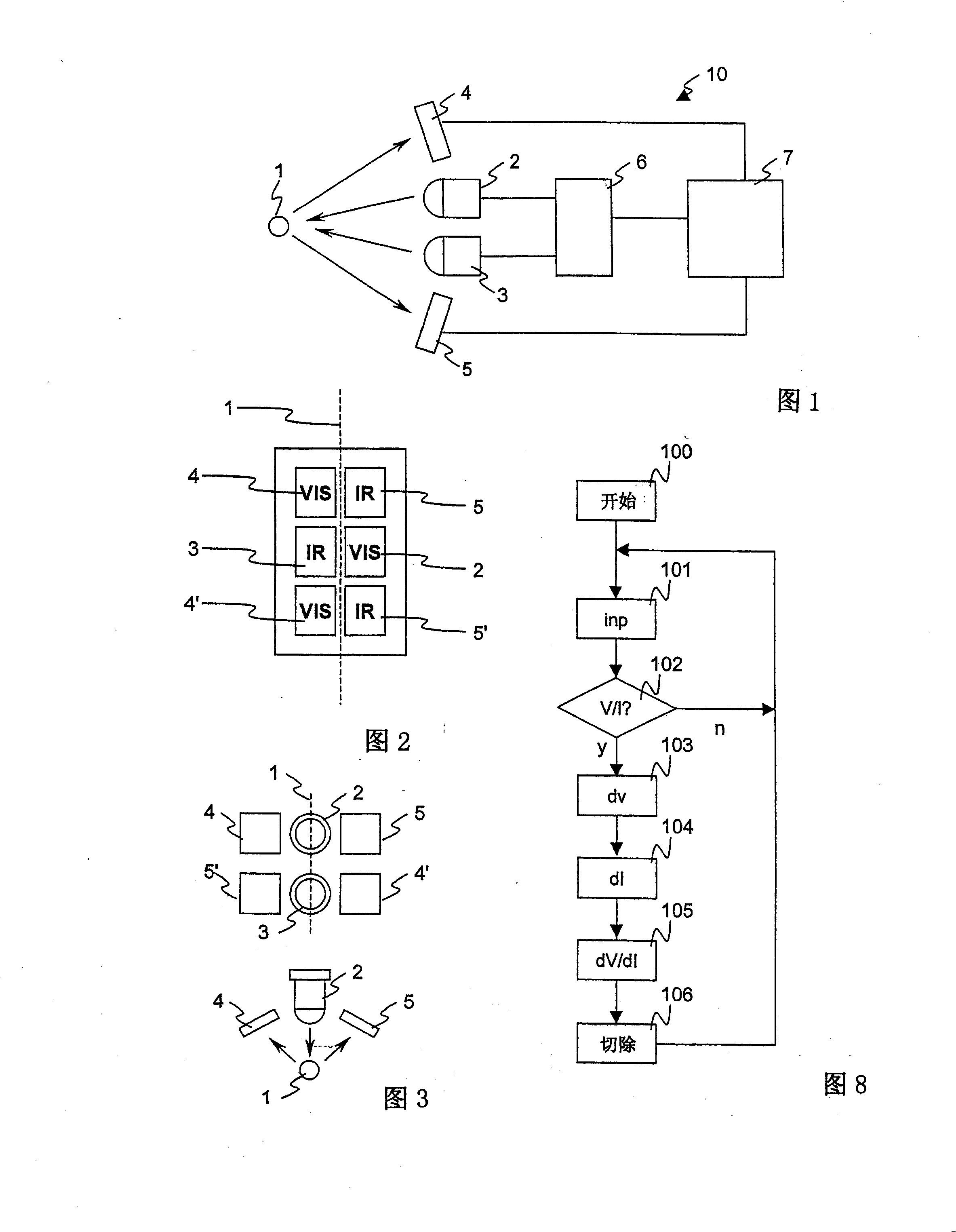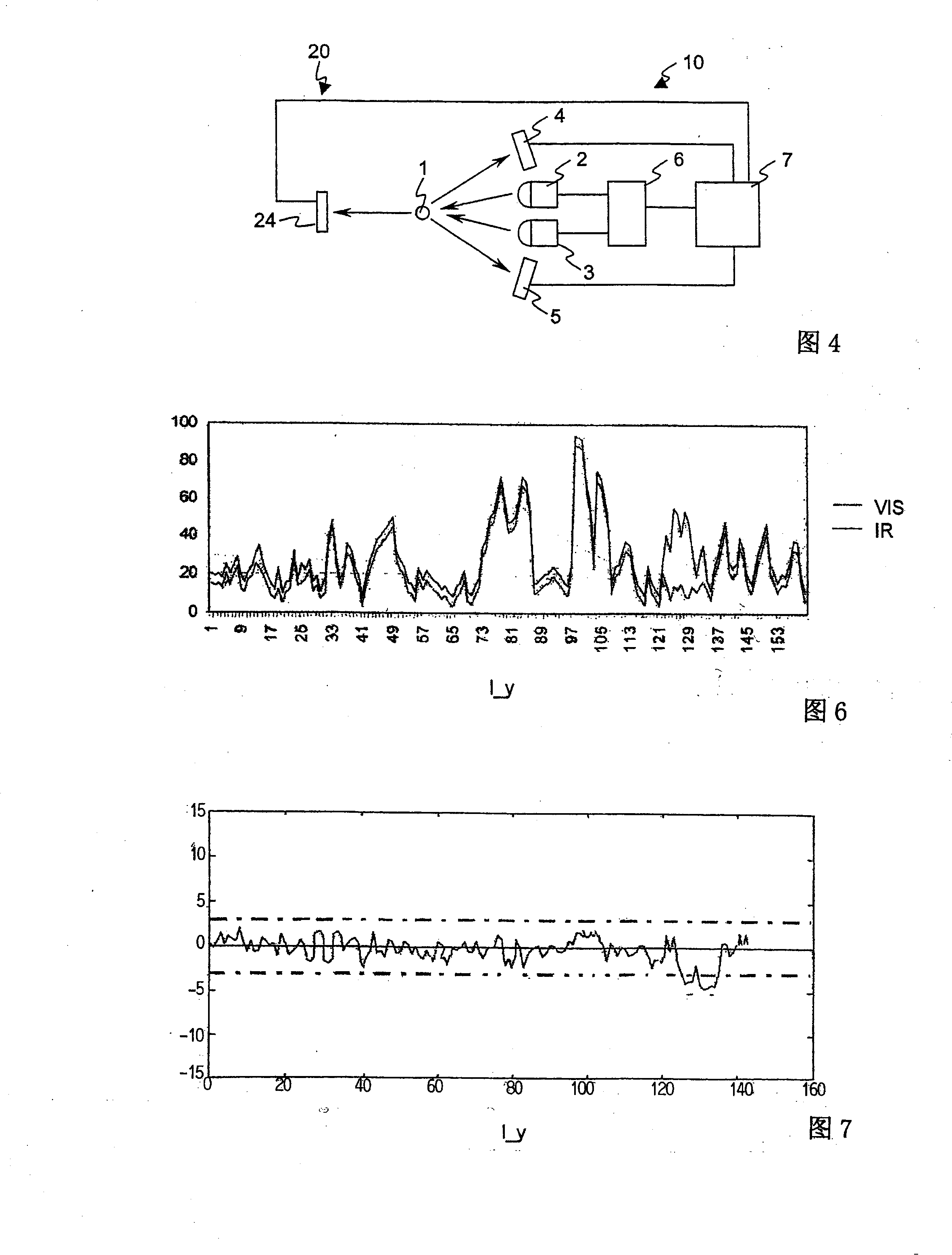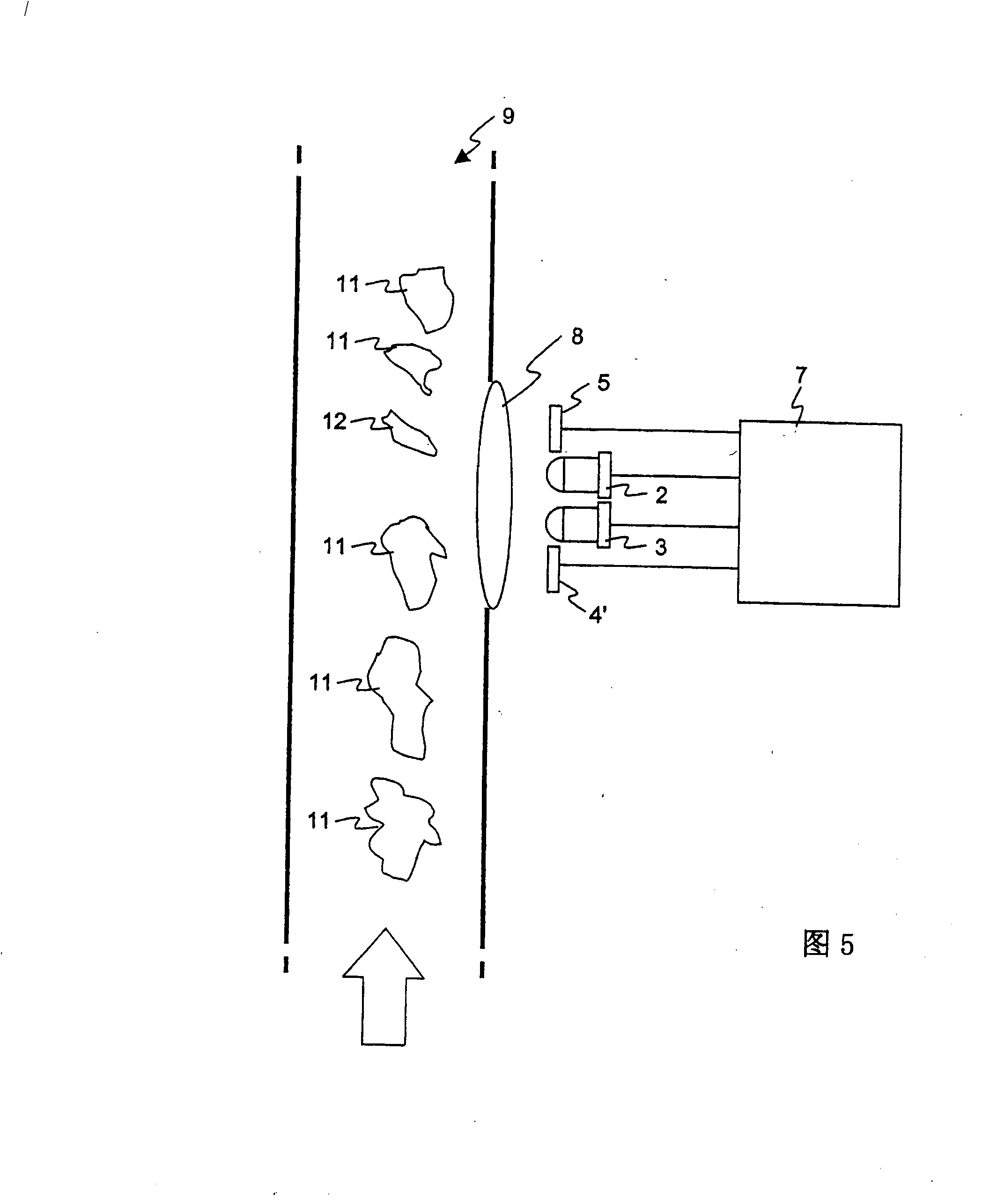Detecting foreign substances in a textile material
A technology for textile materials and impurities, which is applied in the field of equipment for detecting impurities in textile materials, can solve problems such as non-immediate application and complex algorithms
- Summary
- Abstract
- Description
- Claims
- Application Information
AI Technical Summary
Problems solved by technology
Method used
Image
Examples
Embodiment Construction
[0048] Detailed description of the preferred embodiment
[0049] figure 1 A first test layout is schematically shown, in which the yarn 1 is shown frontally, the first light source 2 and the second light source 3 are arranged to illuminate the same part of the yarn 1, and the first detector 4 and the second detector 5 Arranged to receive light reflected from said portion of yarn 1 . The first light source 2 and the second light source 3 are powered by a drive circuit 6 . The signals from the detector 4 and the first detector 5 are processed by the signal processing section 7 by means of analog or digital signal processing elements. The first detector 4 and the second detector 5 constitute a first detector pair 10 for observing the first side of the yarn 1 .
[0050] figure 1 Very simplistic in that it only shows functional relationships between elements, rather than purely geometric relationships. figure 2 The arrangement of light sources and detectors for observing the ya...
PUM
 Login to View More
Login to View More Abstract
Description
Claims
Application Information
 Login to View More
Login to View More - R&D
- Intellectual Property
- Life Sciences
- Materials
- Tech Scout
- Unparalleled Data Quality
- Higher Quality Content
- 60% Fewer Hallucinations
Browse by: Latest US Patents, China's latest patents, Technical Efficacy Thesaurus, Application Domain, Technology Topic, Popular Technical Reports.
© 2025 PatSnap. All rights reserved.Legal|Privacy policy|Modern Slavery Act Transparency Statement|Sitemap|About US| Contact US: help@patsnap.com



